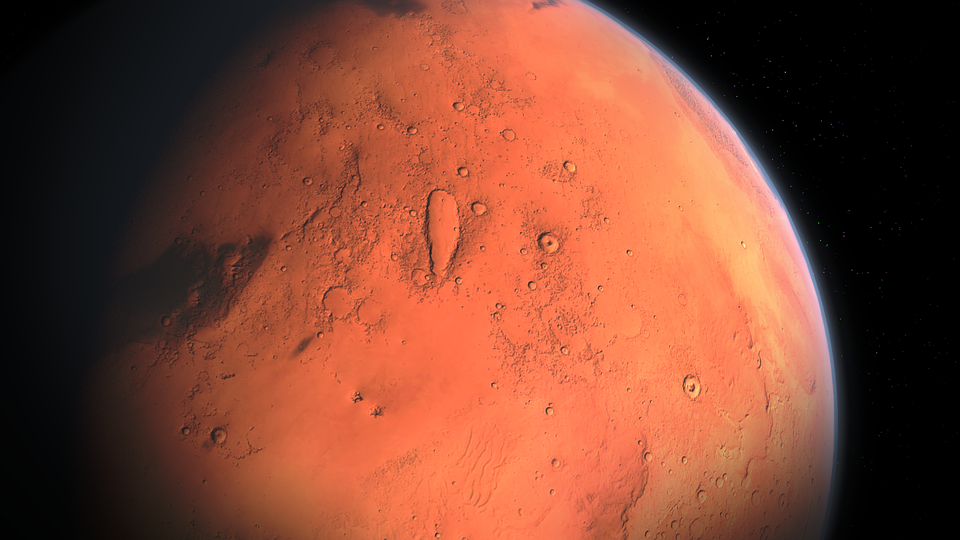As we hear about the exploration of Mars, some of us may wonder how is it possible that at this very moment man-made vehicles are riding around the different planet. How can one send a device to such a remote location and yet remain in touch with it? How to make it free from errors? And how do all of those devices may even function in order to operate in such extraterrestrial conditions? Well, the whole issue becomes even more fascinating when we realize that all of the questions that can possibly pop up in our head are merely a tiny part of all the subjects that must be considered thoroughly before going on a space journey. Mind that we are talking about a challenge so complex and complicated, that even the smallest details must be taken care of perfectly so that the whole project could run well.
Dr Rafał Anyszka is very well aware of that. Together with his colleagues from RED 4 MARS project he set himself a goal to find out which material would be a top pick for wheels of Martian vehicles. [3] It may seem quite specific, but only at the first glance. Why? Because any vehicle operating on Mars must face challenges far different than those on Earth. Velocity, durability and lightness may be attained only if a rover is properly adjusted to the tough conditions of the planet’s surface. Naming speed as a first trait should not mislead you. Quite naturally the scientists do not wish to make Mars races, yet current velocity which allows the vehicles to travel as much as 100 meters per day [2] and there may be certain need for improvement in this field. At this point, sloths or sea turtles move faster.

Apart from that, the materials must be durable so that they could face the rough Martian terrain. Sharp rocks and shards are a considerable threat to the “chassis” of a rover and may thwart further exploration. Moreover, vehicle currently weight as much as one tonne, therefore its parts shall be able to carry such weight. The parts themselves, however, cannot be too heavy, as only devices under certain weight may reach Mars’ surface [2]. What is more, we shall take into the account quite specific “weather” conditions of Mars, such as for instance temperature varying from -120 °C up to 30 °C or high level of cosmic radiation, which can easily reach Mars’ surface due to lack of magnetosphere protecting this planet. [2] All of the issues touched upon above prove how complex Mars missions are, and yet those were merely a small part of challenges from just one of the fields related with a mission!
Let us come back to Dr. Anyszka’s research. He underlines that solutions used so far, such as using aluminium alloys, had demonstrated notable limitations. They were, for instance, prone to various distortions triggered by continuous contact with rocky surface of Mars. The scientist points out that bigger rovers will need more durable materials, not to mention regular vehicles used in future colonization, which additionally will have to reach higher speeds. Being aware of the imperfections of already used solutions, he suggested using rubber tires. However, it cannot be a simple rubber, as it will be exposed to extreme conditions and its servicing options would be, well, quite limited. Therefore we shall go through the list of challenges described above in order to grasp how the future material should look like.
When it comes to speed, which appears to be one of the key traits especially in case of vehicles used in colonization it is solved by choosing tires, which seem to be a perfect pick for riding in rough and bumpy terrain. Dents that would most likely appear as an effect of a continuous contact with a very coarse surface could be absorbed by the elasticity of rubber. It may also improve the rover’s suspension, which in this case seems to be important due to the fact that it carries very delicate devices.
Another issue is durability. We cannot, however, consider it using regular categories, as the conditions the tires are to face are far from normal. Each of elastomers, including rubber, has its own glass transition temperature and in this case it means that after reaching it the material becomes fragile and brittle. [2,5] As mentioned before, the amplitudes of temperature on Mars may reach as much as 150°C with the record cold falling below -120°C, hence chosen elastomer must be as temperature-prove as possible. In this case, it means that its glass transition temperature must be low. These conditions are met by butadiene and silicone rubber. Dr Anyszka suggests that blending both of them would be the most efficient solution.
There is also another issue of an extraterrestrial kind. Mars, unlike the Earth, does not have the magnetosphere nor ozone layer and because of that its surface is exposed to cosmic radiation. [2,4] As an effect all of the fabrics used on Mars are very much prone to such radiation, which considerably affects its macroparticles. They may become either harder or softer, though in both cases that leads to an undesired effect as they lose their primary traits.
There are at least two possible solutions in this case. First of them would be adding particles which can considerably decrease the number of reactions triggered by the radiation. This may be remotely compared to adding a sun cream. The second possible way is about using the materials, which can rebuilt their structure themselves. That may sound, again, extraterrestrial, yet this not-yet-fully-researched area seems to be “promising”. [2] In order to learn more about this issue it is advised to visit the project’s site at ResearchGate platform via link number 1.
As already mentioned, all of the issues touched upon in this article are merely a tiny part of challenges which are to be faced by scientists who aim to explore Mars. Moreover, aforementioned problems were described only briefly in comparison with the gargantuan amount of research on which we base our knowledge about Mars. Therefore one could wonder, how possibly we managed to undertake such effort; or rather how unthinkably amazing is the fact that such effort may eventually succeed?
Bibliography:
- Projekt RED 4 MARS na stronie ResearchGate: https://www.researchgate.net/project/Rubber-Elastomer-Development-for-MArtian-enviRonmental-applicationS-RED-4-MARS
- Anyszka, Blume, Elastometer blends for Mars tires, September 2021 https://www.researchgate.net/publication/354495074_Elastomer_blends_for_Mars_tires
- Anyszka, Rubber and Elastomer Development for Martian Environmental Applications (RED 4 MARS) https://www.utwente.nl/en/et/ms3/research-chairs/ete/research/current-projects/red-4-mars/
- Nowa Encyklopedia Powszechna PWN, Warszawa 1995, tom 2, str. 221
- Nowa Encyklopedia Powszechna PWN, Warszawa 1995, tom 4, str. 28
Filip Kuczyński-Piech




